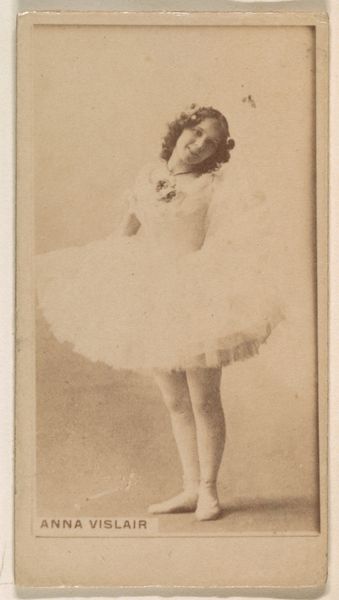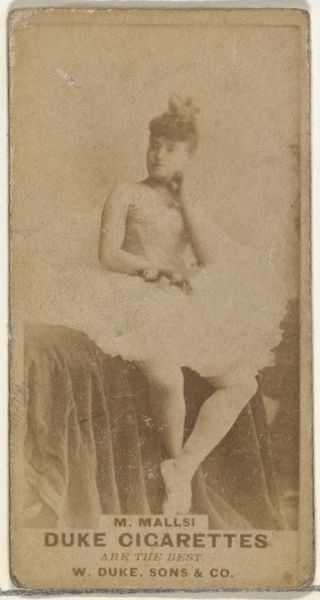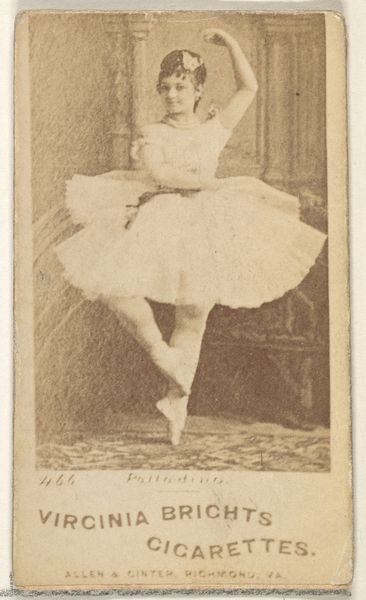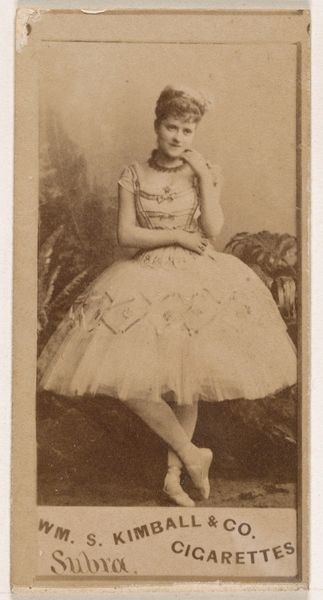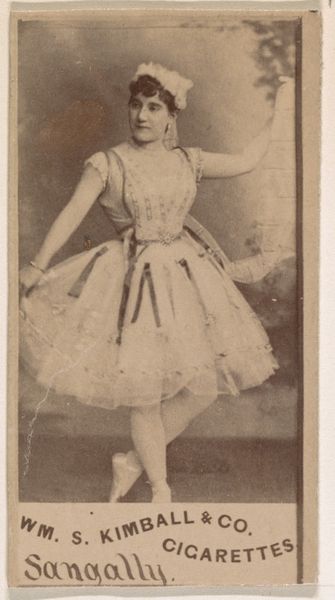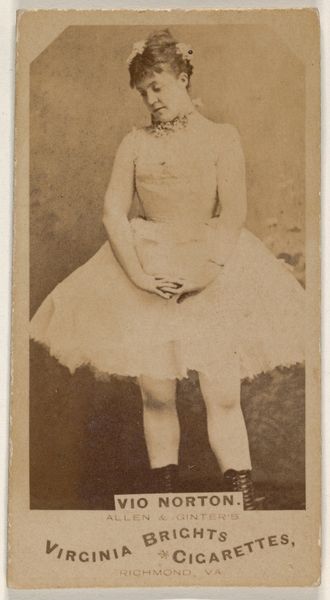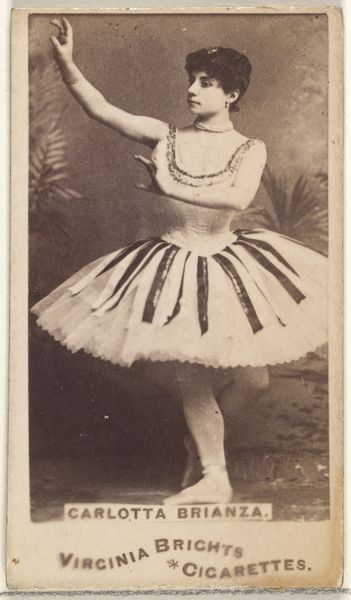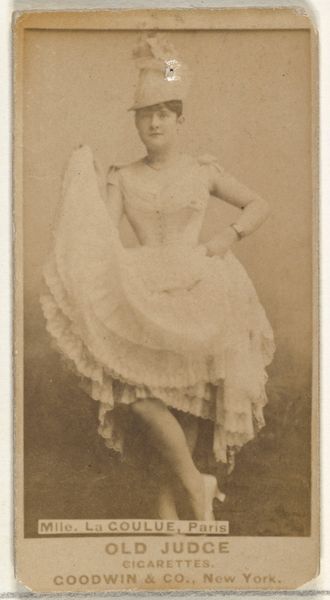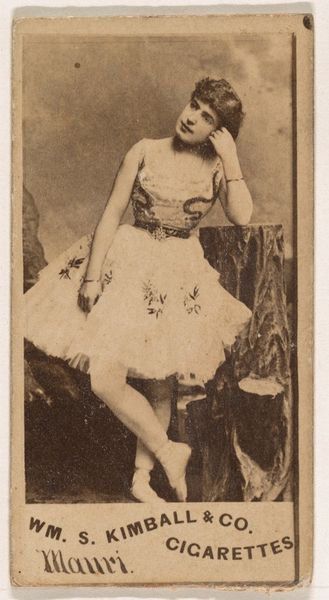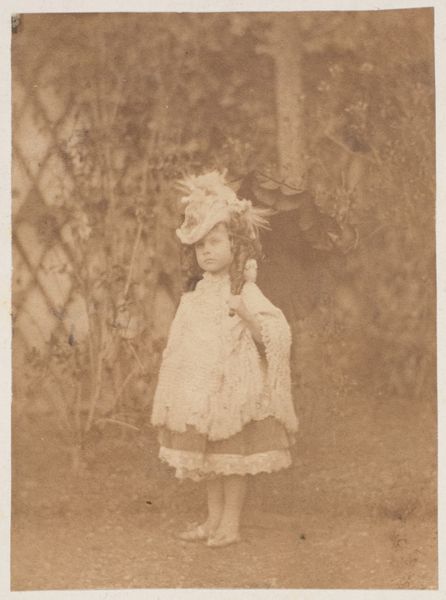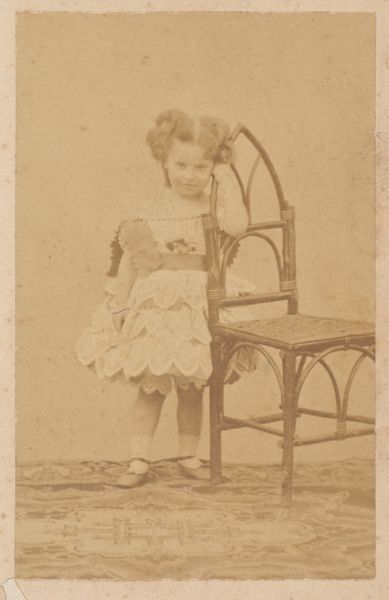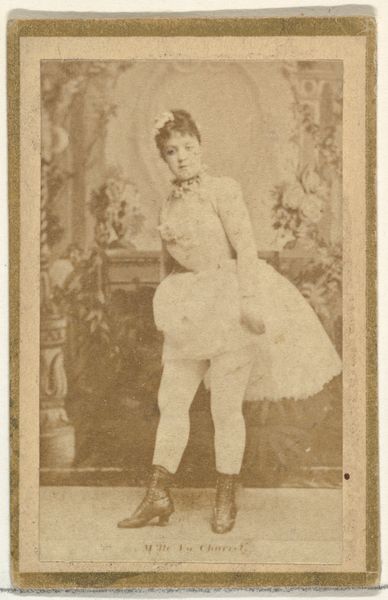
photography, albumen-print
#
portrait
#
photography
#
albumen-print
Dimensions: 7.6 x 10.2 cm. (3 x 4 in.)
Copyright: Public Domain
Curator: "Le fauteuil", or "The armchair," captured in the 1860s by Pierre-Louis Pierson, is an albumen print currently housed at The Metropolitan Museum of Art. Editor: It's striking, almost ghostly. The sepia tones and slight blur give it such an ethereal feel, like peering into a memory. Curator: That’s precisely the point. Photography in the 1860s was already shifting how identity was constructed, and for whom. Consider the sitter, most likely a girl from the upper echelons of society, given the opulence of her dress and the chair itself. This image captures a specific moment within systems of power and privilege. The photograph is not simply documentation; it is deeply embedded within a larger socio-economic framework that promoted distinct markers for identity. Editor: Absolutely, the armchair is important. Thrones carry connotations, and by placing a child in such a seat, the image borrows from that visual language of sovereignty, declaring importance but perhaps, too, the burdens of status. Look at the subtle floral motifs. Does the style reflect something about how her era viewed women's role? Is the ornate design itself a reflection on control and wealth? Curator: The performativity here is quite revealing. Look at her posture and expression. They underscore prevailing notions of innocence and propriety expected of young women during that era, highlighting the tight constraints on their representation and agency. Editor: Yet the image is also quite intimate; the tones are so very warm. Despite all we read into class and society's role in this staged production, you have to also recognize that in centuries from now, someone would look at an iPhone photo of our children and also feel detached emotion, despite all that we try to impose. The heart sees, but sometimes fails to fully read all we seek to teach it about socio-economic concerns. Curator: And the interplay between the photograph and the sitter, and the photograph and the viewer today? They are very potent for understanding class and social constructs as constructed categories over time, through artistic depictions such as these. Editor: Indeed, this small snapshot provides immense insight.
Comments
No comments
Be the first to comment and join the conversation on the ultimate creative platform.
